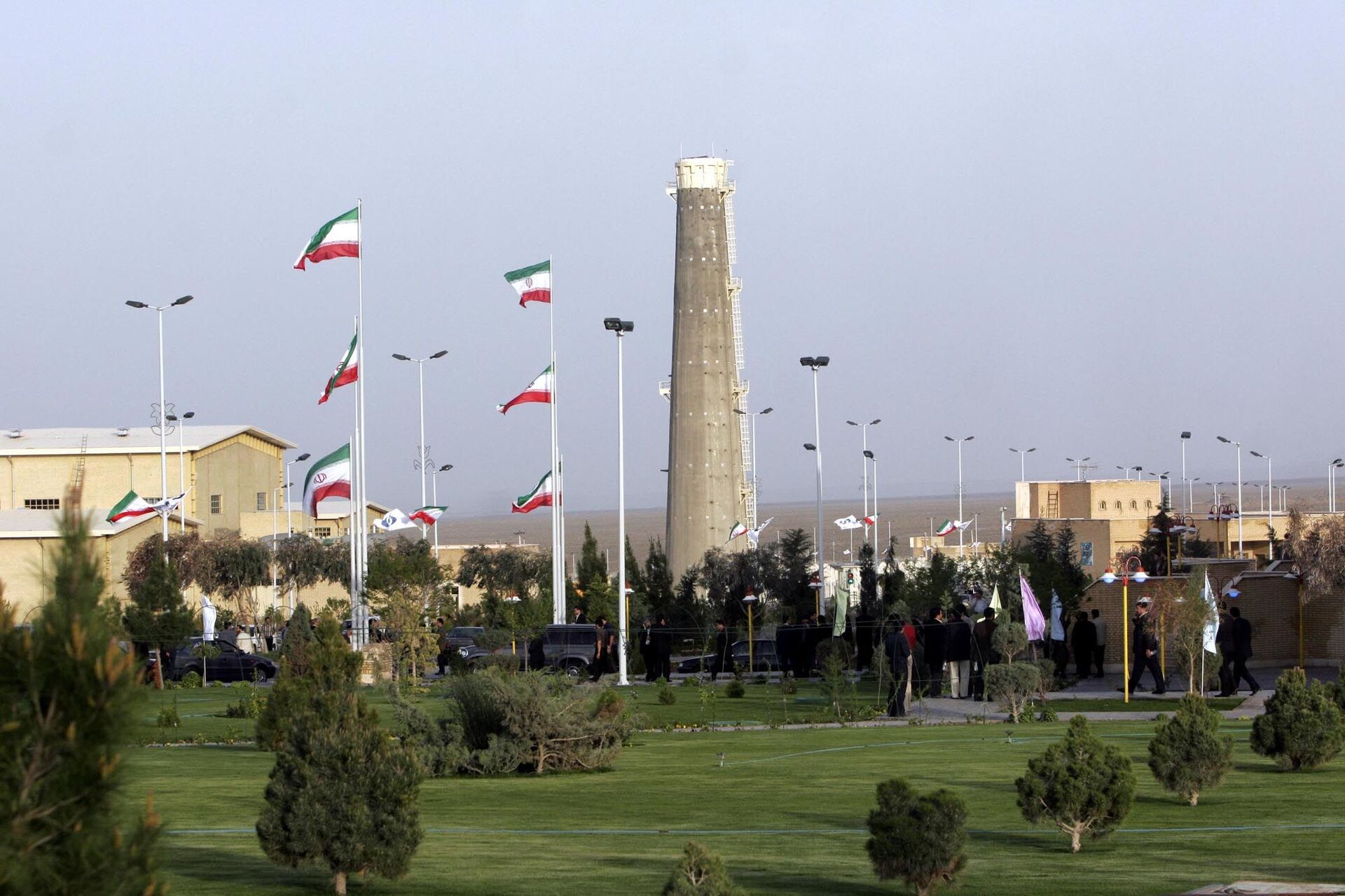Iranian Scientists Recruited by Israel’s Mossad Behind Explosions at Natanz Nuclear Plant - Report
00:52 GMT 03.12.2021 (Updated: 17:24 GMT 15.01.2023)

© AP Photo / IRIB
Subscribe
The sabotage operation at Iran’s Natanz Nuclear Fuel Enrichment Facility in April was carried out by top Iranian nuclear scientists working as agents for Israel’s Mossad intelligence agency, Israeli media reported on Thursday.
On April 11, 2021, as Iranian and European diplomats met in Vienna to discuss how the US might return to the 2015 Joint Comprehensive Plan of Action (JCPOA) now that a new US president with a new Iran policy had taken office, an explosion ripped through the Natanz facility 2,100 miles away.
At the time, Iran reported that the blast had knocked out the power and that only a relatively simple centrifuge had been damaged. Behrouz Kamalvandi, a spokesperson for Iran’s Atomic Energy Organization, described the incident as a “small explosion” that had “damaged sectors [which] can be quickly repaired.” The Israeli government didn’t publicly comment on the attack aside from acknowledging that it had happened.
Despite US and Israeli intelligence officials telling the New York Times on the day of the attack that it had been an explosion, the assumption that it had been a cyberattack proliferated throughout the media. Natanz had previously been the target of a US-Israeli computer worm called Stuxnet, which caused extensive damage to uranium purification centrifuges in 2009 and 2010.
In August, the Times reported that Jerusalem had given the US less than two hours’ notice of the attack - an impropriety that damaged their relationship.
The story published by the Jewish Chronicle on Thursday rewrites much of that narrative, claiming that 90% of the centrifuges at Natanz were destroyed by the operation, which had been carried out by collaborators and not Israeli agents.
According to the report, as many as 10 Iranian scientists were recruited by Mossad, which led them to believe they were acting on behalf of Iranian dissident groups outside the country. Some of the explosives had been planted as early as 2019, the London-based Jewish paper claimed, which noted they had been dropped into the facility by a drone and smuggled inside of a catering truck.
“The scientists’ motivations were all different,” one source told the paper. “Mossad found out what they deeply wanted in their lives and offered it to them.”
“There was an inner circle of scientists who knew more about the operation, and an outer circle who helped out, but had less information,” they added.

Iran's nuclear enrichment facility in Natanz in 300 kms 186 (miles) south of capital Tehran, Iran (File)
© AP Photo / HASAN SARBAKHSHIAN
The paper also says the Iranian agents were responsible for a previous explosion at Natanz in July 2020 that caused extensive damage to an above-ground facility and a missile drone attack on the Karaj research facility in June.
The news comes as Israel is once again seeking to interrupt a US-Iran rapprochement on the 2015 nuclear deal, which would remove economic sanctions imposed against Tehran by the Trump administration when it unilaterally withdrew from the deal in 2018. In exchange, Tehran would accept strict limitations on the quality and quantity of nuclear material it can possess.
After the Trump administration pulled out of the deal, Iran began backing away from its own commitments made under the deal, too, refining uranium-235 to higher and higher purities, but saying they are ready to return to the deal’s limitations once it reenters force.
Jerusalem, which always hated the deal, has consistently accused Iran of secretly circumventing its restrictions and continuing to attempt to develop a nuclear weapon, which it claims Iran would use against it. However, Iran’s religious authorities have decreed nuclear weapons, along with all weapons of mass destruction, are against Islamic law. Tehran says it only wants uranium for electrical generation and medical research.
Last month, the Israeli government approved a $1.5 billion budget to draw up and rehearse plans for a potential attack on Iran's nuclear facilities, which are heavily guarded and many of which, like Natanz, lay deep underground.
Despite the political rhetoric about an imminent nuclear weapon, Israeli intelligence has also openly dismissed reports Iran might be close to a nuclear weapon, noting there were no indications of new weapons-level work alongside the new refinement efforts.
Earlier this week, Israeli intelligence reportedly gave the US evidence that Iran was preparing to refine uranium to a purity of 90% U-235, which is weapons-grade. Iran has so far only admitted to refining up to 60% U-235. The intelligence sources who spoke with Axios noted that it could still take Iran one to two years to develop adequate weapons technology to turn such high-purity uranium into a useable bomb, though.
